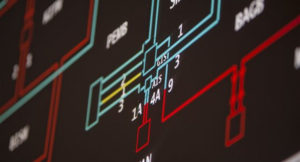 Smaller generators and aggregated loads can now access the balancing mechanism (BM), opening up a £1.1bn market for demand-side response and flexible technologies.
Smaller generators and aggregated loads can now access the balancing mechanism (BM), opening up a £1.1bn market for demand-side response and flexible technologies.
National Grid ESO uses the BM to balance supply and demand every half hour. To date, the minimum threshold has been 100MW – too high for smaller aggregators and individual distributed generators. Participants have also required a supply licence.
The ESO and Elexon committed to remove those barriers by the end of this year. From today, flexibility providers can register in the BM as ‘virtual lead parties’. They will not need a supply licence nor have to pay use of system costs. Meanwhile, changes to industry rules around metering and notifications should make forecasting and payment simpler and more accurate when complete.
While the BM requires more hands on management of assets, aggregators that choose to bid megawatts into the BM can in theory offer customers greater value, provided they can respond with potentially shorter notice than the more defined intervals of traditional services, such as Stor.
National Grid hopes the move will also bring more renewable power into grid balancing.
The ESO last week set out plans for the future of frequency response and reserve as it bids to ensure the system has sufficient flexibility to cope with loss of inertia from thermal plant as renewables penetration increases. It has committed to enabling the system to run 100 per cent on renewables by 2025 – and so will need to buy more flexibility and inertia services. Inertia, according to head of the system operator, Fintan Slye, “has been taken for granted”.
“Widening access to our balancing mechanism is an important step towards meeting that 2025 target, and making sure our system is as flexible and secure as possible,” said ESO head of commercial, Richard Smith.
“It opens up opportunities for new providers and technologies to become part of the market, and for that market to further diversify its energy mix as we bring embedded generation like solar and wind into the balancing mechanism.”
Elexon chief, Mark Bygraves, said opening up the BM was a “significant milestone” toward net zero.
“It means, for example, that independent aggregators can help more consumers provide demand-side response,” he added. “Independent aggregators can also help to ensure that the benefits of increased diversity and decentralisation in electricity supply are maximised, both for businesses and consumers.”
Elexon is also working with National Grid ESO to implement Terre, the European reserve market, expected to go live by June 2020. That should open up another pool for flexibility providers to access, potentially worth up to £250m per annum, broadly the equivalent of the ancillary services market.
 Free demand-side response report
Free demand-side response report
Interested in demand-side response?
Download this free report, with input from National Grid, Elexon, suppliers, aggregators, DNOs, consultants and end users that provide flexibility. It provides views on market challenges, opportunities and the road ahead.
Get the report here.
Related stories:
National Grid outlines future of frequency response
Grid chief: Inertia has been “taken for granted, it will become much more important”
Project Terre: What’s it worth?
Terre and BM: Elexon opens market entry process for aggregators
Does load DSR require a separate incentive?
EDF Energy: Flexibility is the key to Net Zero
DSR: Water firms, industrials and SMEs on what is working, what’s not
Charging reform ‘key to unlocking DNO flex’
UKPN: We’ll give flex every change before resorting to reinforcement
National Grid works to open BM to all, prepares for Terre
New control desk ‘doubles small flex’ in BM
Can the Balancing Mechanism offset FFR price erosion?
National Grid outlines plans to bring all flex providers into Balancing Mechanism
Flexitricity aims for supply licence, eyes BM prize
Limejump: Aggregators will need a supply licence to survive
Follow us at @EnergystMedia. For regular bulletins, sign up for the free newsletter.



